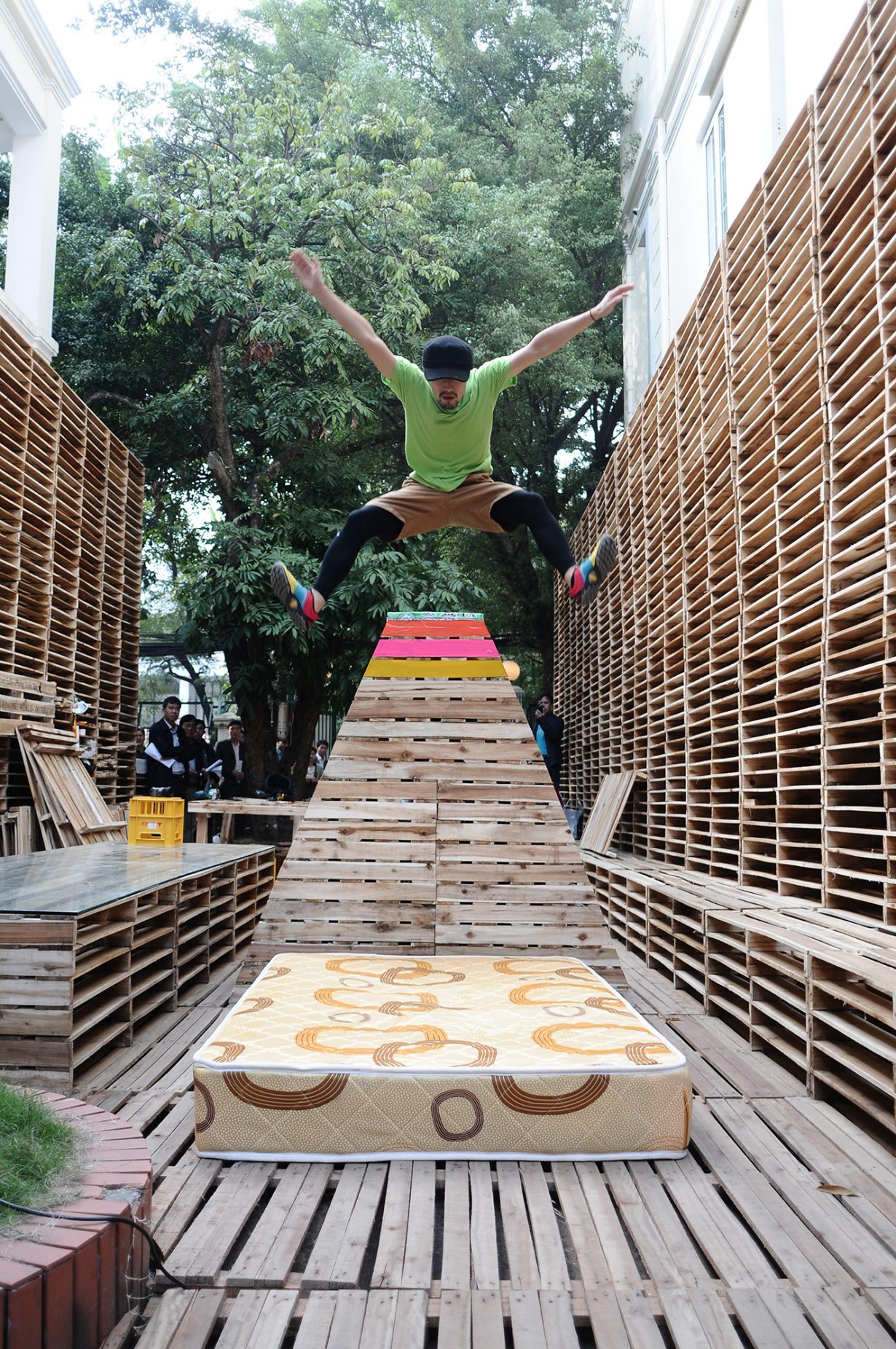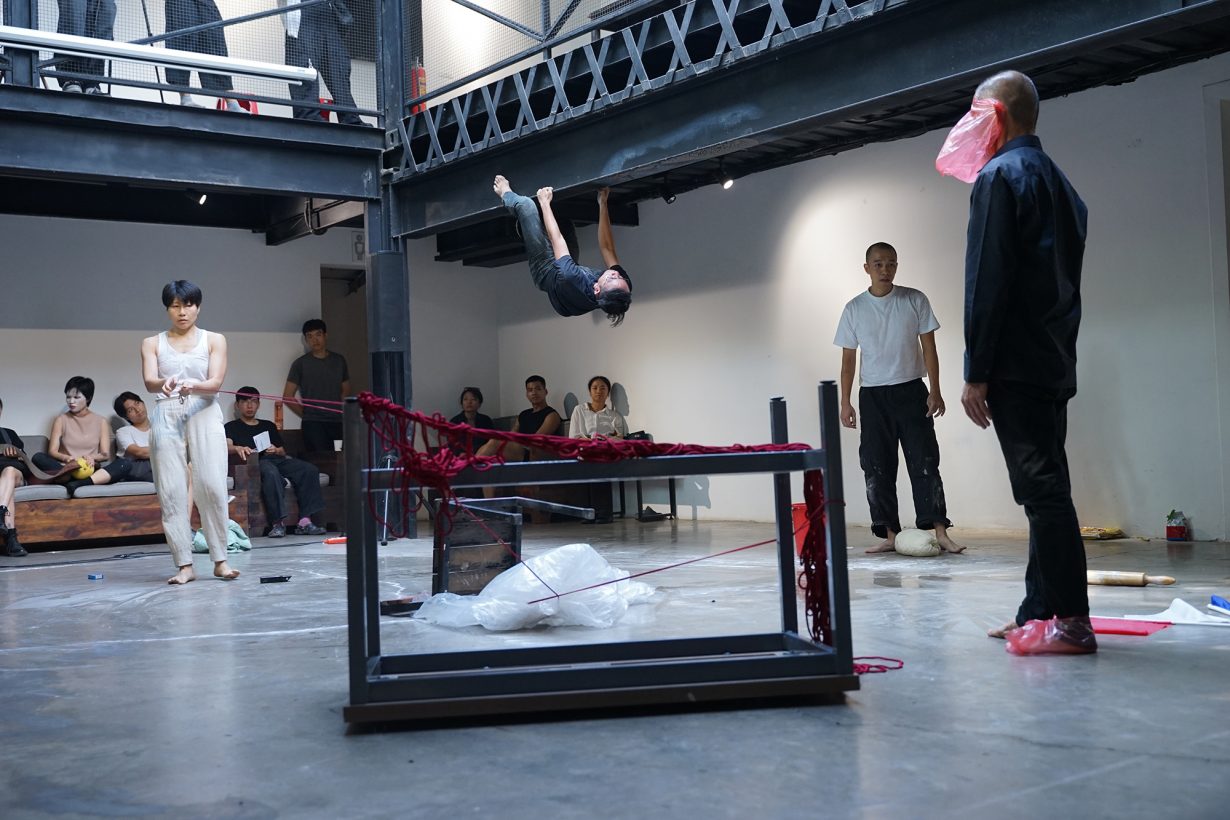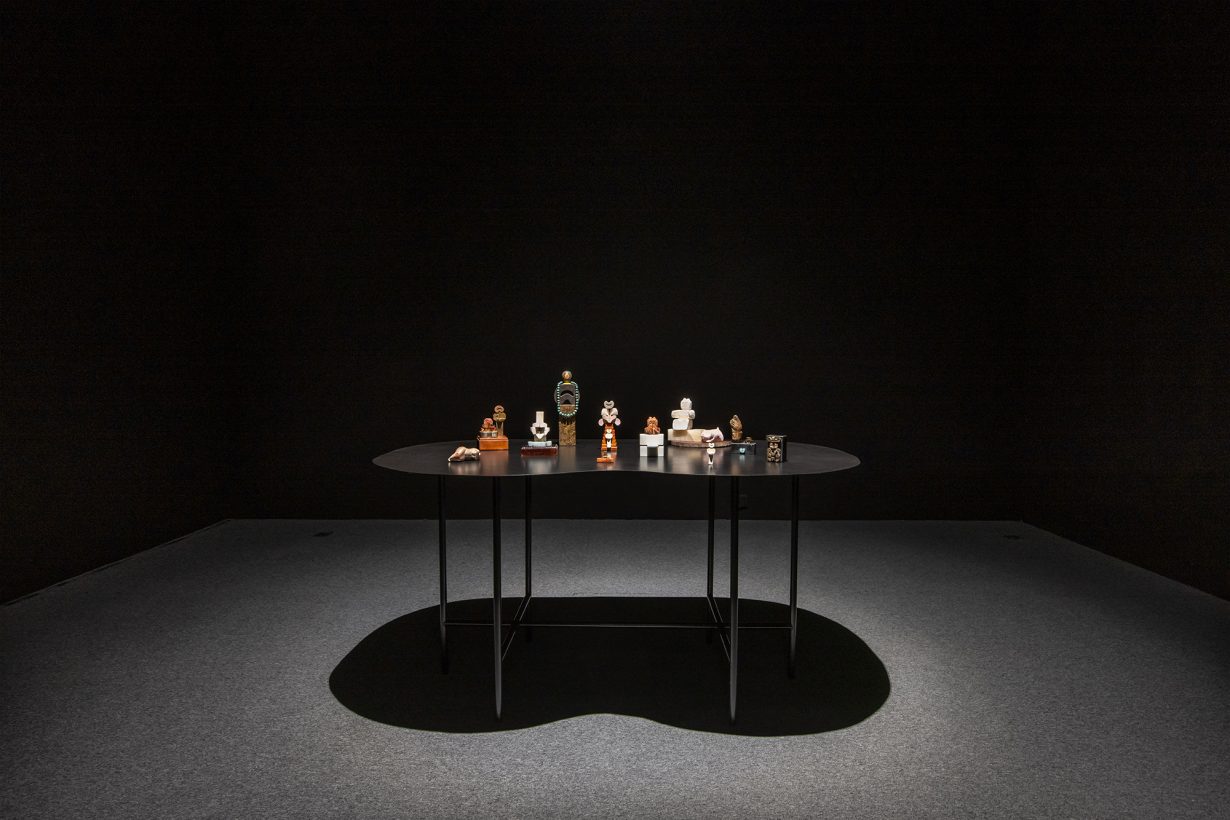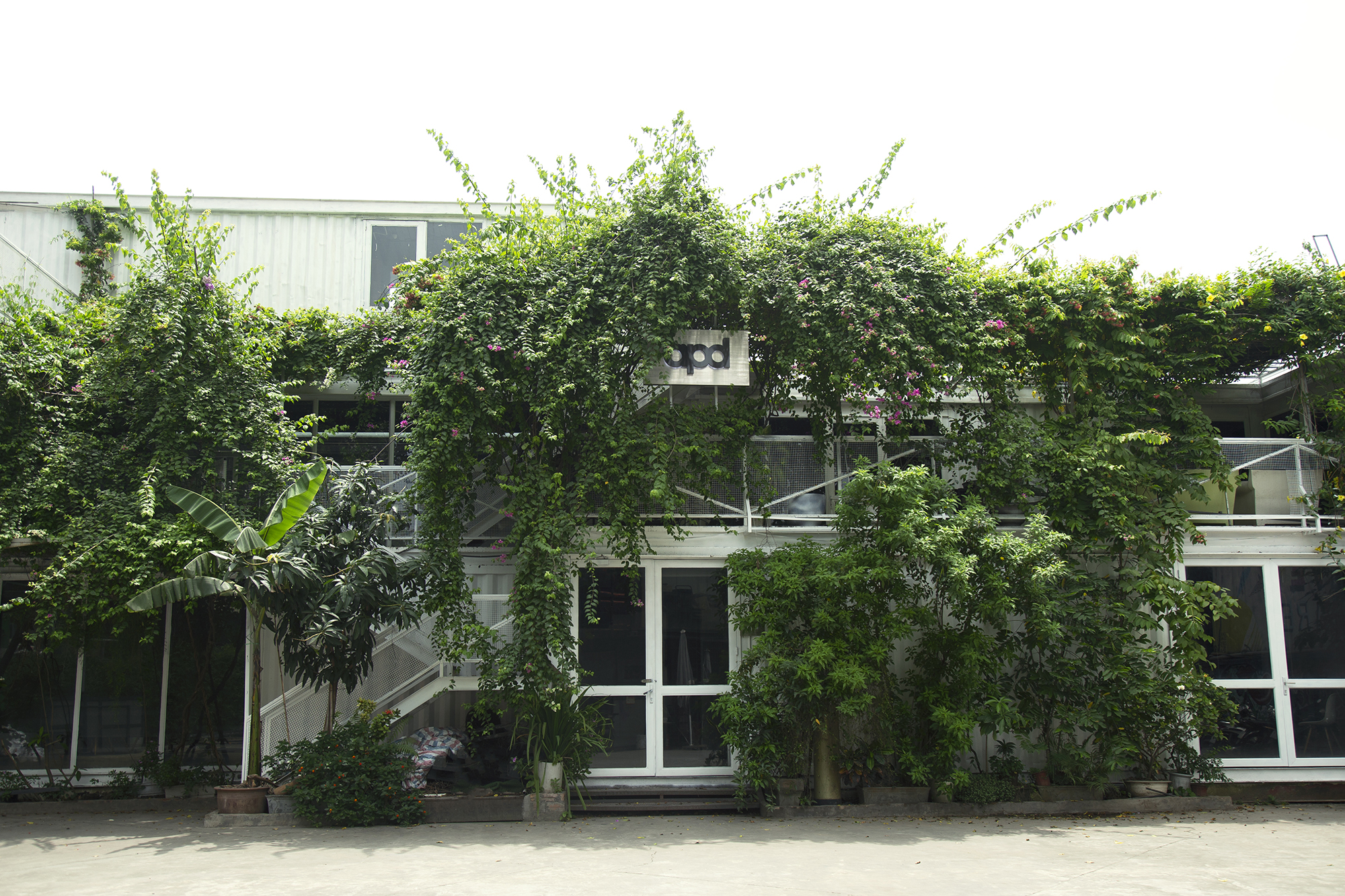You’re not going to find a lot if you look via traditional Western markers
“To the outsider, the Vietnamese art scene might seem almost invisible,” notes artist and filmmaker Nguyễn Trinh Thi when we meet at Manzi Art Space and Café, a café in Hanoi with a small garden and an art gallery. The Vietnamese art scene seems to develop without support from public infrastructures for contemporary art – there are no public museums dedicated to contemporary art, few commercial galleries. There were no public universities or academies offering contemporary art programmes until recently, when Pamela Nguyen Corey, a Vietnamese-American art historian specialising in Southeast Asian contemporary art, launched an Art & Media Studies programme at Fulbright University in Ho Chi Minh City. Despite all this, there’s no lack of creative output.
In recent decades, a collaborative network of artists and curators, driven by a DIY spirit, has organised a broad range of exhibitions, workshops and festivals. These initiatives have succeeded thanks not only to the financial support of overseas cultural institutions such as the Goethe Institut and the Ford and Rockefeller foundations, but also to political changes within the country’s transition to a global market-economy. The government, however, continues to impose a strict framework of control over visual art and media outlets: all art exhibitions must apply for an official exhibition permit from the Ministry of Culture, Sports and Tourism. A number of locally funded private foundations have been established with the intention of better serving the artistic community, among them Ho Chi Minh City’s Nguyen Art Foundation and, in Hanoi, The Outpost Art Organisation, Vincom Center for Contemporary Art (VCCA) and Center for Art Patronage and Development (APD).
Visitors to Documenta 15 in 2022 might recall the garden of migratory plants, installed at WH22 in Kassel, a project by Tuấn Mami, member of Nhà Sàn Collective. The collective grew out of Nhà Sàn Studio, founded in Hanoi in 1998 by a group of artists, including Nguyễn Mạnh Đức and Trần Lương. The studio, which was based in Nguyễn’s family home, was Vietnam’s first independent artist-run space and was shut down by the communist government in 2011. Despite this, Nguyễn’s daughter, Nguyễn Phuong Linh, tells me, “The younger generation of Nhà Sàn Studio was able to organise the Skylines with Flying People festival in 2012, and a year later we formed Nhà Sàn Collective.”

At APD in Hanoi I meet Trần Lương, but we don’t speak of the past. Instead his focus is on the institution’s current programme. “APD was founded to compensate for the lack of governmental support for contemporary art,” Trần tells me. “We focus on exchange, theory, practical activities and social development.” He continues, “This year we have organised five trips for young artists – including one to plant mangroves in the Mekong Delta and another in the mountains of Quang Nam Province – as well as Tầm Tã, our annual practical mentoring course for art and curating.” The course is vital, given that Vietnamese art academies teach only traditional techniques, such as lacquering, silkscreen, sculpture and drawing. Even university libraries have very few publications on postwar art. ‘Open Studios’ is a banner name adopted for independent exhibitions to avoid government censorship, since the country’s Ministry of Culture vets all cultural content for both public events and publications.

I visit the Lý Trực Sơn solo show at VCCA with independent curator and writer Ðô ̃ Tường Linh. “The common perception of Vietnamese art from the outsiders is that it explores themes of propaganda, war, diaspora and political stances,” she tells me. “However, there are Vietnamese artists who explore complex themes including conceptualism, posthuman, ecology, AI. Against the backdrop of those challenges, artists are striving and creating spaces for themselves.” She continues:
––Hanoi DocLab and [its founder] Nguyễn Trinh Thi, for instance, were able to remain independent for years due to their partnership with the Goethe Institut. The contract between the Vietnamese government and the Goethe Institut stipulated that anything that happened within the walls of the institute was considered to be taking place on German territory, and therefore free from censorship. This is not unique to Vietnam. In countries like China, Thailand and Indonesia, contemporary museums funded by private collections – including Museum MACAN in Jakarta, MAIIAM Contemporary Art Museum in Chiang Mai – are far more daring in terms of their programmes than government-run institutions. Over the past few decades, most of the funding for contemporary art in Vietnam has come from foreign institutions. The international biennial Saigon Open City 2006–08, curated by Gridthiya Gaweewong and Rirkrit Tiravanija, was funded by the Ford and Rockefeller foundations. This foreign investment has raised concerns within Vietnam, a communist country in which any overseas influence is viewed with suspicion.––
The nonprofit VCCA is located within the Vincom Mega Mall Royal City of Nam Từ Liêm district, one of Hanoi’s most commercial, administrative and service-oriented areas. Here the city skyline – notable for its high-rise headquarters of banks and other multinational corporations – testifies to the significant changes that have taken place in Vietnam since the Đổi economic reforms in 1986, which allowed the country to integrate with the global economy.

Less than half an hour away is The Outpost Art Organisation, the country’s first private contemporary art museum, founded by entrepreneur Ariel Phạm. This elegant white cube with a café and a bookshop shows Phạm’s art collection and group exhibitions. The 2024 exhibition The Curious Adventure of the Modules: A visual essay on Điềm Phùng Thị’s system of signs reflected on the intergenerational relationships between Thị (1920–2002), one of the first Vietnamese modernist women sculptors, who lived and worked between France and Vietnam, and a new generation of artists like Hachul Lệ Đổ, Ngô Đình Bảo Châu, Ðô ̃ Thanh Lãng and Nguyễn Hữu Hải Duy, who created a video animation based on modules designed by Thị.
Yet, despite the lack of funding, education and exhibition spaces, the Vietnamese contemporary art scene seems to be thriving. “We are doing what we can to develop a sustainable ecosystem for the arts, even if we need more players in the game,” notes Quynh Pham, cofounder of commercial gallery Galerie Quynh in Ho Chi Minh City. Other contemporary commercial galleries in Hanoi include CUC Gallery, Gate Gate Gallery and Mo Art Space. “Curators and art critics should promote Vietnamese artists at an international level, to elevate them on the global stage and to help us write our own art history – something that, for far too long, has been written by outsiders,” Ðô ̃ Tường Linh tells me. Her words offer a contrast to the more market-oriented, and increasingly conformist, approaches of Western artworlds. “Participating in the Tầm Tã programme at APD taught me that contemporary art has the ability to trigger the cultural and political significance of a site, as well as to facilitate happenings and encounters,” Hanoi-based interdisciplinary researcher Bui Duy Thanh Mai is keen to point out at APD. It’s a statement that reflects on the independence and vitality driving the Vietnamese art scene.
Lorenza Pignatti is a writer, curator and professor at the New Academy of Fine Arts (NABA) in Milan
From the Spring 2025 issue of ArtReview Asia – get your copy
